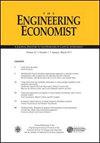A dynamic target volatility strategy for asset allocation using artificial neural networks
IF 1.2
4区 经济学
Q4 BUSINESS
引用次数: 6
Abstract
ABSTRACT A challenge to developing data-driven approaches in finance and trading is the limited availability of data because periods of instability, such as during financial market crises, are relatively rare. This study applies a stability-oriented approach (SOA) based on statistical tests to compare data for the current period to a past set of data for a stable period, providing higher reliability due to a more abundant source of data. Based on an SOA, this study uses an artificial neural network (ANN), which is one of the commonly applied machine learning algorithms, for simultaneously forecasting the volatility and classifying the level of market stability. In addition, this study develops a dynamic target volatility strategy for asset allocation using an ANN to enhance the ability of a target volatility strategy that is established for automatically allocating capital between a risky asset and a risk-free cash position. In order to examine the impact of the proposed strategy, the results are compared to the buy-and-hold strategy, the static asset allocation strategy, and the conventional target volatility strategy using different volatility forecasting methodologies. An empirical case study of the proposed strategy is simulated in both the Korean and U.S. stock markets.基于人工神经网络的资产配置动态目标波动策略
在金融和贸易领域发展数据驱动方法面临的挑战是数据的可用性有限,因为不稳定时期(如金融市场危机期间)相对较少。本研究采用基于统计测试的面向稳定的方法(SOA),将当前时期的数据与过去一组稳定时期的数据进行比较,由于数据来源更丰富,因此提供了更高的可靠性。本研究基于SOA,采用人工神经网络(ANN)——一种常用的机器学习算法,对市场波动率进行预测,同时对市场稳定程度进行分类。此外,本研究开发了一种用于资产配置的动态目标波动率策略,使用人工神经网络来增强目标波动率策略的能力,该策略用于在风险资产和无风险现金头寸之间自动分配资金。为了检验所提出的策略的影响,使用不同的波动率预测方法,将结果与买入并持有策略、静态资产配置策略和传统目标波动率策略进行了比较。本文以韩国和美国的股票市场为对象进行了实证研究。
本文章由计算机程序翻译,如有差异,请以英文原文为准。
求助全文
约1分钟内获得全文
求助全文
来源期刊

Engineering Economist
ENGINEERING, INDUSTRIAL-OPERATIONS RESEARCH & MANAGEMENT SCIENCE
CiteScore
2.00
自引率
0.00%
发文量
14
审稿时长
>12 weeks
期刊介绍:
The Engineering Economist is a refereed journal published jointly by the Engineering Economy Division of the American Society of Engineering Education (ASEE) and the Institute of Industrial and Systems Engineers (IISE). The journal publishes articles, case studies, surveys, and book and software reviews that represent original research, current practice, and teaching involving problems of capital investment.
The journal seeks submissions in a number of areas, including, but not limited to: capital investment analysis, financial risk management, cost estimation and accounting, cost of capital, design economics, economic decision analysis, engineering economy education, research and development, and the analysis of public policy when it is relevant to the economic investment decisions made by engineers and technology managers.
 求助内容:
求助内容: 应助结果提醒方式:
应助结果提醒方式:


